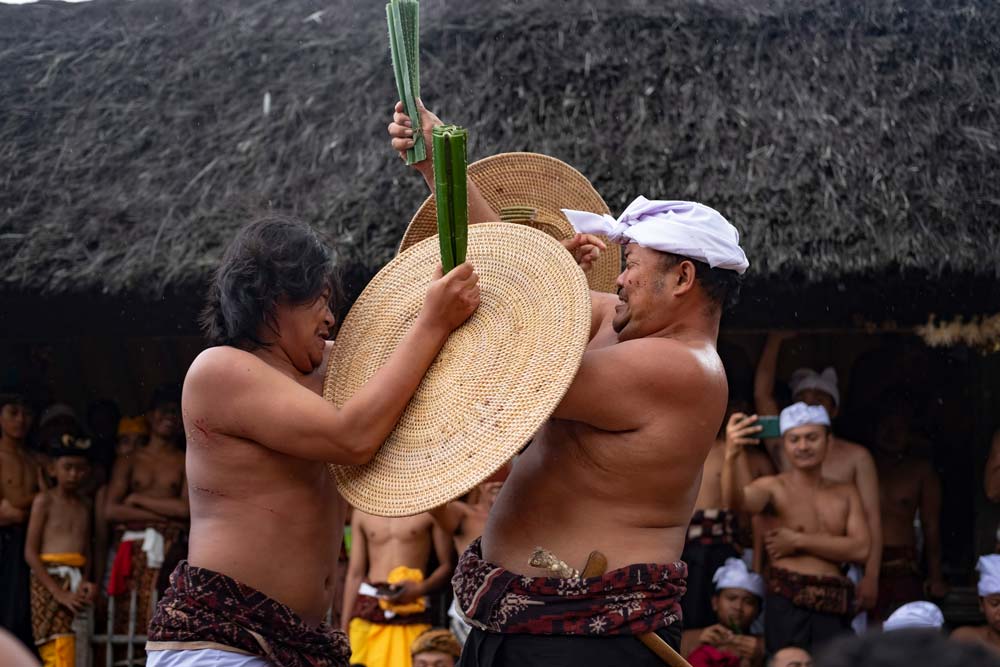
One of the yearly highlights at Desa Adat Tenganan Pegringsingan (Traditional Village of Tenganan Pegringsingan) is Mekare-kare, the vibrant pandan wars that mark the ‘climax’ of their ritual calendar.
Found 3km north from the popular coastal town of Candidasa, Tenganan Pegringsingan is a Bali Aga village, whose way of life and customs differ greatly from the majority of Balinese Hinduism across the island.
It is during the village’s big ceremonies when visitors can see Tenganan in its full regalia when its philosophy is made visual and tangible.
Explaining the Pandan Wars / Mekare-Kare
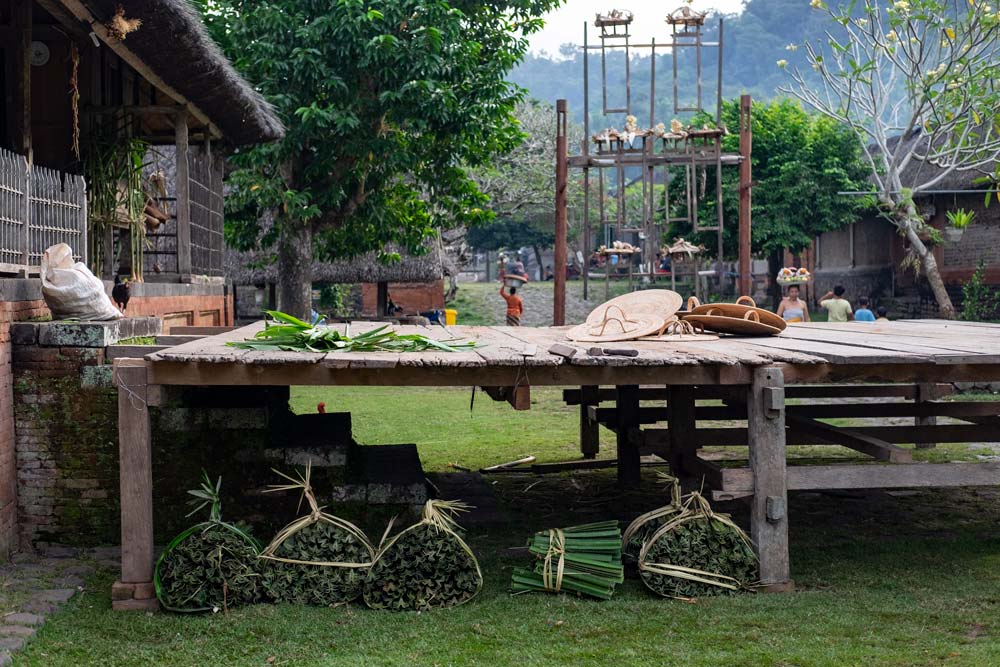
The Tenganan calendar is similar to the Gregorian, made up of 12 months (known as sasih). Every month will have its important ceremonies, lasting one to three days, but the fifth month (sasih kelima) is the pinnacle of the ritual year. This is the month of Usaba Sambah, a month-long ceremony filled with prayers, sacred dances, sacrifices, ceremonial foods, ritual swings, gatherings… all ending in the ‘climax’ of mekare-kare, or ‘perang pandan’ i.e. the famed Pandan Wars.
The Pandan Wars, lasting for two days at the end of the fifth month, is therefore the best time to visit Tenganan Pegringsingan. Normally in the months of June or July, these two days are an ultra-condensed showcase of what Tenganan is all about and one can witness so much of the community’s uniqueness in a short time. Traditional dress, instruments, dance, food and ritual will all be on show.
The most visible rituals include: Manyunan, where all of the young daha (young women), dressed head-to-toe in their best gringsing cloth and other accoutrements, take their seats on age-old ritual swings, which are then turned by the teruna (young men). The swing is symbolic of the cyclical nature of life — these young Tengananese to keep the wheels turning another generation.
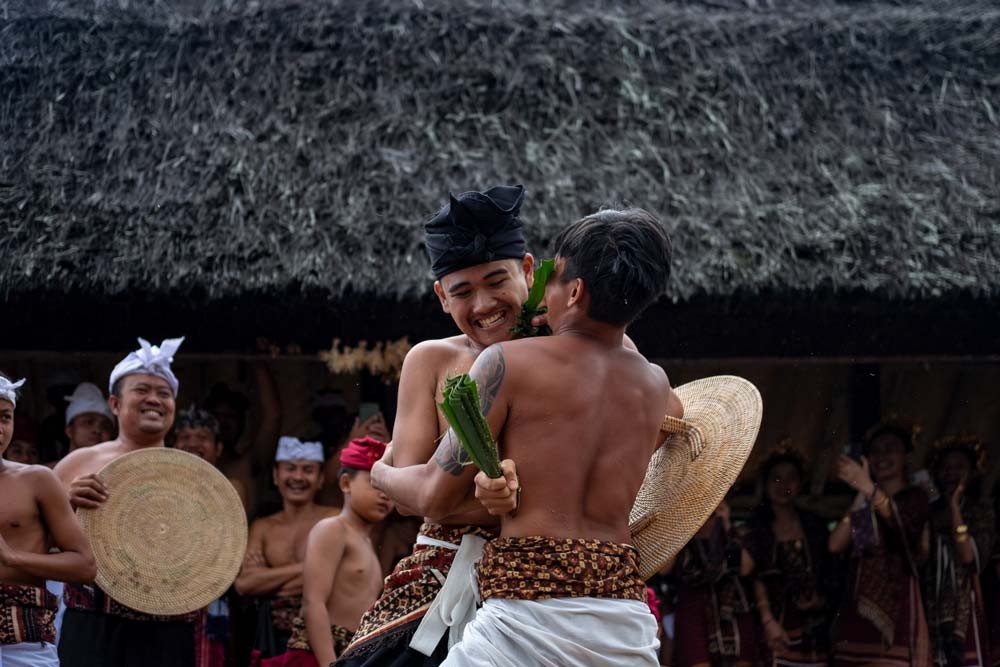
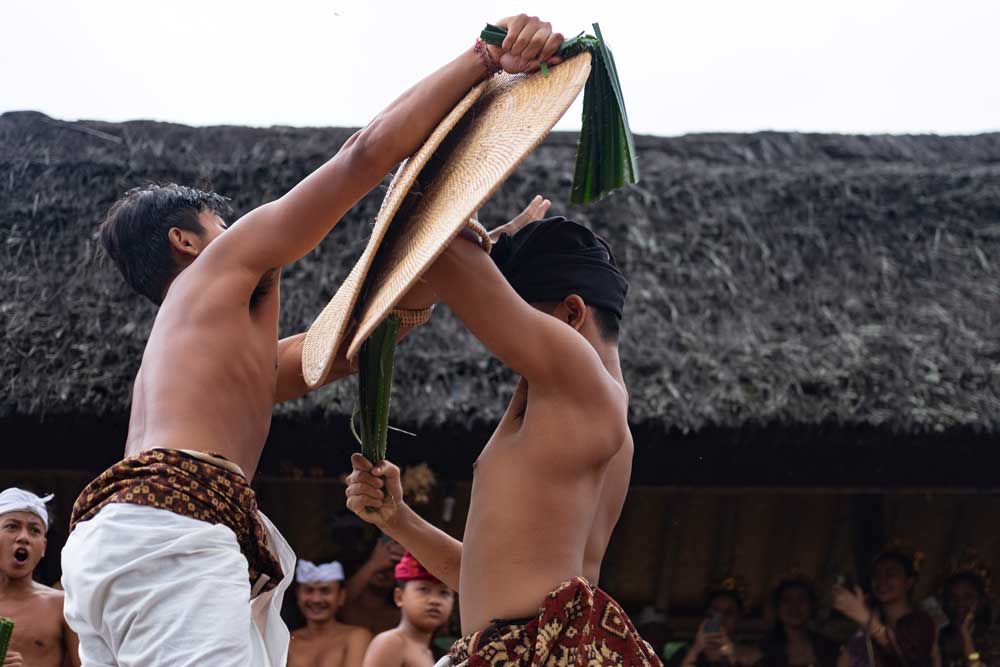
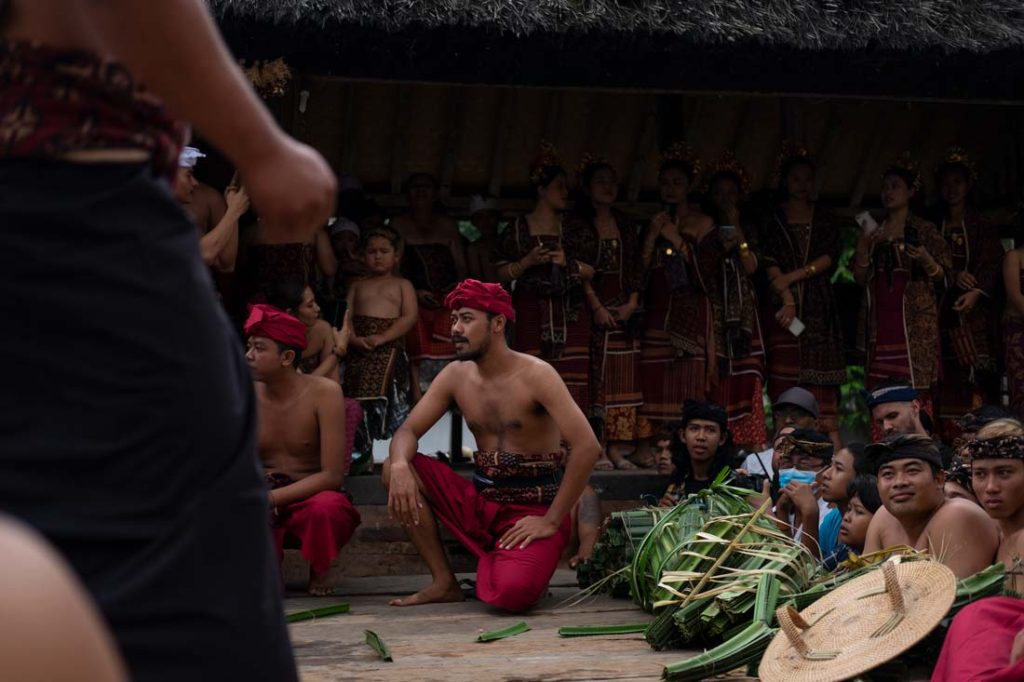
Then comes the Pandan Wars. Taking place in front of one of the bale petemuan pavilions, the stage is set for battle. The young teruna men take their turns to face an opponent with bunched, thorny pandan leaves in one hand and a rattan shield in the other.
Then, to the tune of the sacred selonding gamelan, the fights begin. Chaotic scenes as each warrior scrambles and wrestles in an effort to grate the skin of their opponent with the sharp thorns of the pandan. Tabuh Rah. Blood sacrifice. They honour Dewa Indra, God of War, with their bloody battle, their blood a gift to the earth. The atmosphere is electric and the surrounding crowds cheer and jeer in unison as each exciting but short-lived combat takes place.
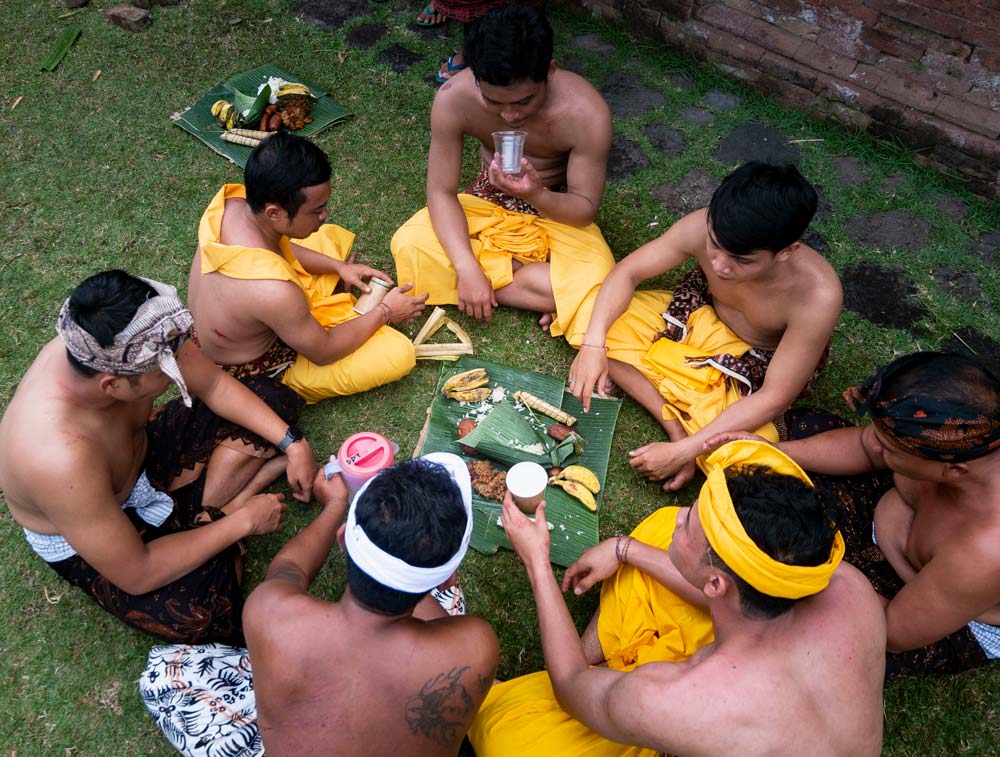
Still, with every strike, with every thorn that shreds the skin, with every drop of blood that quenches the ground beneath their feet, there are smiles all around. After each round the beaming fighters embrace, their deed is done. There are no winners or losers here, only a commitment to the community. When enough has been spilt, the warriors take turns to dress each other’s wounds, then sit together in a shared meal known as megibung.
The Usaba Samba ritual is the denouement of this particular Bali Aga community, before the curtains close on this ‘theatre’ for another year. Exact dates vary every year.
Watching the Mekare-Kare Pandan Wars
The public are allowed to watch the famed pandan wars, and normally the second day is more of a ‘festival’ as a stage is created at the central bale so that all can see the action. As always, Tenganan Village is open for donation from visitors as they enter (a counter is found to the right of the entrance).
The spectacle begins roughly around midday, starting with a ritual procession that circles around the village. More rituals are done by the boys and men on stage, and then the fighting begins.
Read our in-depth story on Desa Adat Tenganan Pegringsingan to understand this special and unique village, with its history, customs and beliefs.










